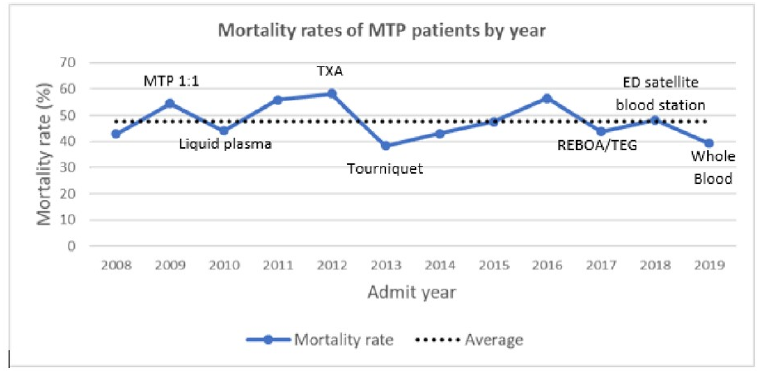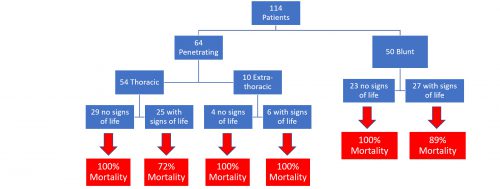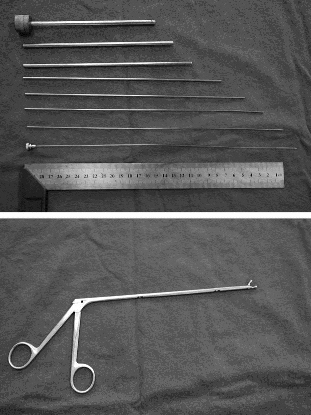REBOA is the new kid on the block. Human papers first started appearing in the trauma resuscitation literature about six years ago. Since then, we’ve been refining the details: how to use it, who to use it in, as well as a lot of the technical tidbits.
The group at Denver Health Medical Center compared their experience with pelvic packing vs REBOA for patients with unstable pelvic fractures. They reviewed four years of experience to see if they could further clarify some of the benefits of this technique.
Here are the factoids:
- A total of 652 patients presented with pelvic fractures, and 78 underwent pelvic packing for control of hemorrhage
- Of these 78 patients, 31 also had a REBOA catheter placed and 47 did not
- The ISS in the REBOA+ group was significantly higher at 49 vs 40
- Although systolic blood pressure and heart rate were statistically more abnormal in the REBOA+ group, these values were not clinically different (SBP 65 vs 72, HR 129 vs 117)
- The amount of transfused red cells and plasma was twice as high in the REBOA+ patients (RBC 16 vs 7, FFP 9 vs 4)
- There was no difference in survival rate (REBOA 84% vs packing 87%)
The authors concluded that this study suggests REBOA plus pelvic packing provides life-saving hemorrhage control in otherwise devastating injuries.
Here are my comments: So the authors inserted REBOA catheters in addition to pelvic packing in half of their patients that were more severely injured, gave them twice as much blood product, and had the same number of survivors. But the primary outcome was the same. It’s very difficult to tease out which factors are responsible when there are such significant differences between the groups with respect to factors that have a definite impact on survival.
Did the use of REBOA equalize survival in the more severely injured patients, or was it the additional blood products, both, or neither? It’s really not possible to say. REBOA may be a valuable adjunct to trauma resuscitation, but we still need more information so we can be sure we are using it in the right patients.
And some questions for the authors:
- How did you select patients for REBOA? This could make a big difference and inject significant selection bias. Could your surgeons have been primed to use this in patients who looked sicker?
- Have you considered matching subsets of your patient groups with similar ISS and transfusion volumes, and then comparing mortality? This could be revealing, but I suspect the numbers will be too small to have the statistical power to show any differences.
This will be a very interesting paper to listen to! I look forward to more details.
Reference: Inflate and pack! Pelvic packing combined with REBOA deployment prevents hemorrhage related deaths in unstable pelvic fractures. AAST 2020 Oral Abstract #4.



